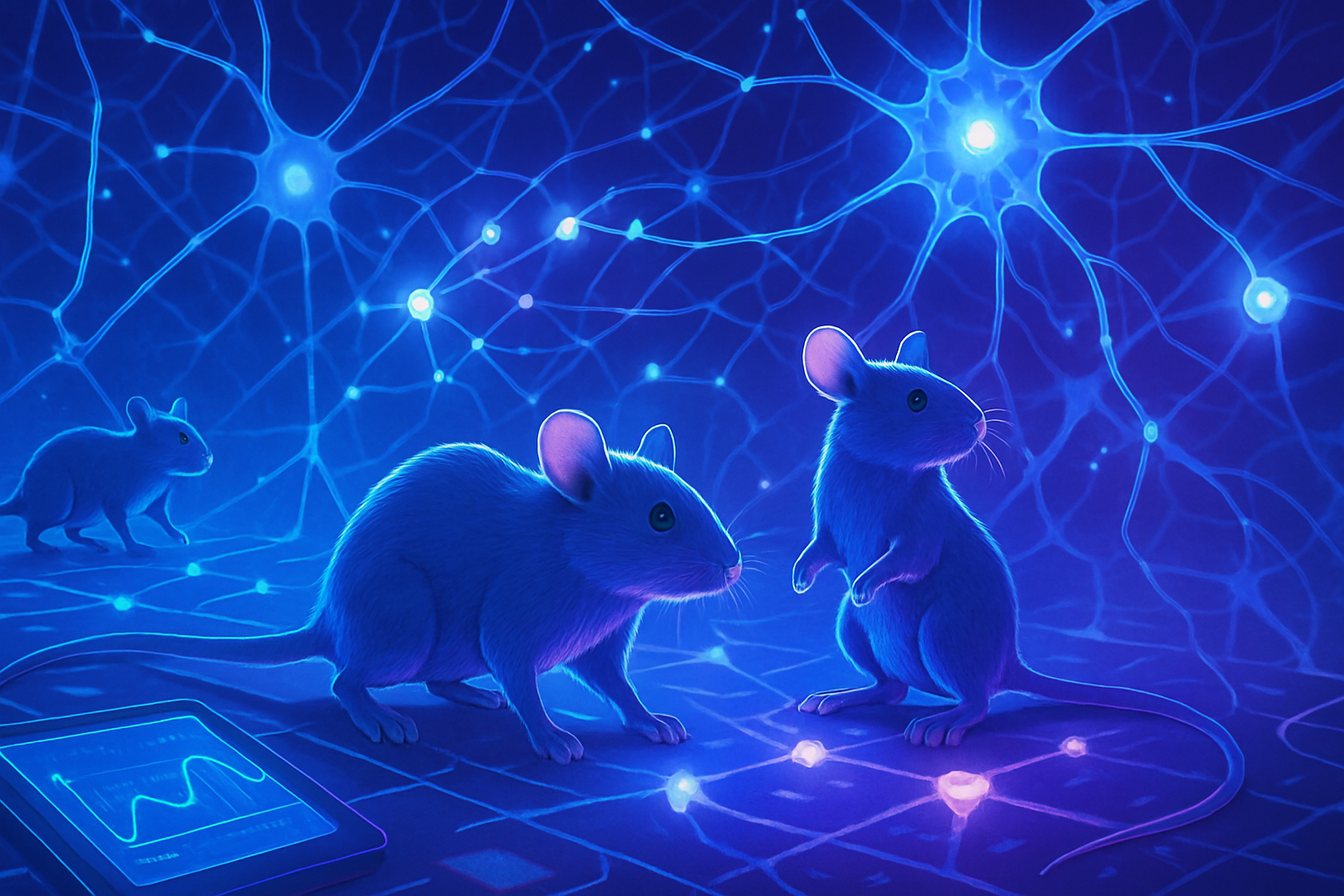Mice and AI Neural Networks Understanding the neural mechanisms behind this phenomenon could revolutionize our social interactions. Several researchers have demonstrated surprising similarities between the learning of mice and that of artificial intelligence systems. Reconstructing these learning patterns offers new perspectives for designing more efficient AI systems. Exploring these dynamics raises the question of the very essence of cooperation across different intelligences.
Striking Similarities Between Mice and AI
A recent study from the University of California, Los Angeles (UCLA) highlights significant resemblances in cooperative learning patterns between mice and artificial intelligence systems. The findings, published in the journal Science, reveal how these two entities develop similar behavioral strategies when it comes to achieving common goals.
Common Behavioral Strategies
The researchers designed an innovative task where pairs of mice had to coordinate their actions within an increasingly constrained time frame to obtain rewards. The mice learned to move closer to their partner, to wait before interacting, and to engage in mutual interactions before making decisions.
These behaviors significantly increased during the training period, with interactions nearly doubling as the mice developed their cooperation skills.
Interconnection Between Biology and Artificial Intelligence
The project also involved the creation of artificial intelligence systems through multi-agent reinforcement learning. The AI agents were trained on a similar task in a virtual environment. This parallel approach allowed for a direct comparison of cooperative learning between biological and artificial systems.
The results showed that the AI agents adopted strategies similar to those observed in mice, such as waiting behavior and precise coordination of actions. Neural networks organized themselves into functional groups to enhance responses to cooperative stimuli.
Neuroscientific Implications
The neurons in the anterior cingulate cortex (ACC) of mice encoded these cooperative behaviors. This brain region seems essential for cooperative performance. When the activity of the ACC was inhibited, cooperation dropped, confirming its crucial role in coordinated behavior.
For artificial intelligence systems, the deactivation of neurons linked to cooperation also resulted in a significant decrease in their cooperative performance, indicating that specialized neural circuits are necessary to succeed in this domain.
Future Research Perspectives
The researchers plan to study other brain regions involved in social behavior to deepen the understanding of the neural mechanisms governing cooperation. Principles derived from the study of animal cooperation could influence the design of more collaborative AI systems.
By examining interactions between biological and artificial systems, this research could provide insights into the very nature of cooperation, both in humans and in the field of artificial intelligence.
Weizhe Hong, the lead author of the study, emphasized that both systems, biological and artificial, have developed similar behavioral strategies and neural representations, suggesting that there are fundamental computational principles underlying cooperation.
This study is also part of a broader research program related to prosocial behavior across biological and artificial systems. Recent findings on inter-brain neural dynamics indicate that “shared neural spaces” emerge during social interactions between mice and AI systems.
Past work on helping behavior in animals, as well as the mechanisms underlying altruistic behaviors, provides a comprehensive overview of the neural bases of these forms of prosocial behavior. This partnership between biology and technology could thus illuminate major social issues.
For more information on innovations in artificial intelligence, check out articles concerning the exploitation of AI, the Nobel prizes in physics and chemistry, and new data resources for training robotic algorithms, as detailed in our previous articles.
Frequently Asked Questions
How do mice and AI neural networks develop similar cooperative behaviors?
Research shows that both mice and AI systems adopt similar behavioral strategies while learning to cooperate, indicating fundamental learning principles that transcend biology and technology.
What are the main cooperative behaviors observed in mice in the study?
Mice developed three key behaviors: approaching their partner’s side in the chamber, waiting for their partner to arrive before acting, and engaging in mutual interactions before making decisions.
How does neuronal activity in the anterior cingulate cortex influence cooperative behavior?
The study revealed that neurons in the anterior cingulate cortex encode cooperative behaviors and that neuronal activities were stronger in mice displaying better cooperative performance.
What implications does this research have for the design of collaborative AI systems?
The principles of cooperative behaviors observed in mice could inform the design of more sophisticated AI systems, integrating similar strategies to enhance interaction among artificial agents.
What are the benefits of understanding the mechanisms of cooperation in biological and artificial systems?
Understanding these mechanisms is essential for resolving social conflicts and addressing issues affecting social behavior while also improving our AI systems.
Can the findings of this research be applied to other fields outside of AI?
Yes, the discoveries may also influence areas such as international diplomacy and teamwork dynamics, highlighting the importance of cooperation.
What techniques were used to observe the behaviors of mice during the experiment?
The researchers used advanced calcium imaging technology to record the activity of individual brain cells while the mice cooperated to obtain rewards.






